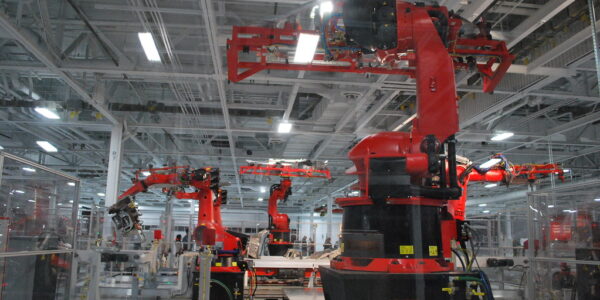Robots are being hailed as a solution to the persistent labor shortage. But there are some problems with this idea, not the least of which is the fact that robots are currently quite limited in their manufacturing abilities. Combining robots and humans — as has already been done in robotic surgery — could be a game-changer.
Human dexterity plus automation’s reliability
The advent of robotics has revolutionized the manufacturing industry, making production faster and more efficient. However, there are still some manufacturing jobs that require a level of dexterity and responsiveness that robots are not yet capable of. This is where the idea of having humans remotely control robots comes into play. This approach could potentially make physical labor into remote work for humans and extend the value of robots in the factory.
Remote control of robots for manufacturing jobs is not a new concept. In fact, it has been used for decades in the aerospace and defense industries, where the manufacturing of complex parts and systems requires a high level of precision and accuracy. However, with advancements in technology, this approach can now be applied to a wider range of manufacturing tasks.
One of the primary benefits of remote control of robots is the ability to perform tasks that are difficult or dangerous for humans to perform directly. For example, tasks that involve exposure to hazardous chemicals or materials, high temperatures, or high levels of noise or vibration can be performed remotely by a human operator, reducing the risk of injury or illness.
In addition, remote control of robots can provide greater flexibility in the manufacturing process. Instead of having to design a new robot for each specific task, a single robot can be designed and programmed to perform a variety of tasks, with the human operator providing the necessary input and adjustments for each task. This can lead to significant cost savings and increased efficiency in the manufacturing process.
Another advantage of remote control of robots is the ability to overcome the limitations of current robotic technology. While robots have come a long way in terms of their ability to perform complex tasks, they still lack the dexterity and responsiveness of a human operator. With a human operator remotely control the robot, the robot can perform tasks that would otherwise be impossible or impractical for it to perform on its own.
Remotely controlling robots for manufacturing jobs could also extend the value of robots in the factory. By having a human operator remotely control the robot, the robot would be able to perform more complex and responsive tasks than it would if it were working autonomously. This could potentially lead to higher quality products being produced, as well as a decrease in the number of errors made.
Good for humans?
In addition, the use of remote-controlled robots could also lead to new opportunities for remote work for human operators. Instead of having to be physically present on the factory floor, operators could potentially work from a remote location, accessing the robot through a secure network connection. This could allow for more flexible work arrangements and potentially open up job opportunities for people who may not be able to work in a traditional manufacturing setting.
Remotely controlling robots for manufacturing jobs could be done in various ways. One way is by utilizing a virtual reality (VR) system, where a human operator would wear a headset and use their hands to manipulate the robot. This would allow them to control the robot in a more intuitive way, as they would be able to move and manipulate the robot directly. It would also provide a more immersive experience for the operator, allowing them to get a better sense of what the robot is doing.
Another way to remotely control robots for manufacturing jobs is through the use of teleoperation. This involves the use of a remote control device, such as a joystick, to control the robot from a distance. This would allow a human operator to control the robot without having to physically be present in the factory. This could be especially useful for jobs that require a high degree of precision, as the operator would have a greater level of control over the robot’s movements. This approach is already in use with the DaVinci robotic surgery system.
Whether human operators are involved or not, automation will always require excellent motion control systems. Indramat drive and control systems were ahead of their time, and many of them continue to work hard in factories today. If you need service or support for your Indramat systems, we can help. Call for immediate support.
Image courtesy of Patrick Herbert under Creative Commons license
